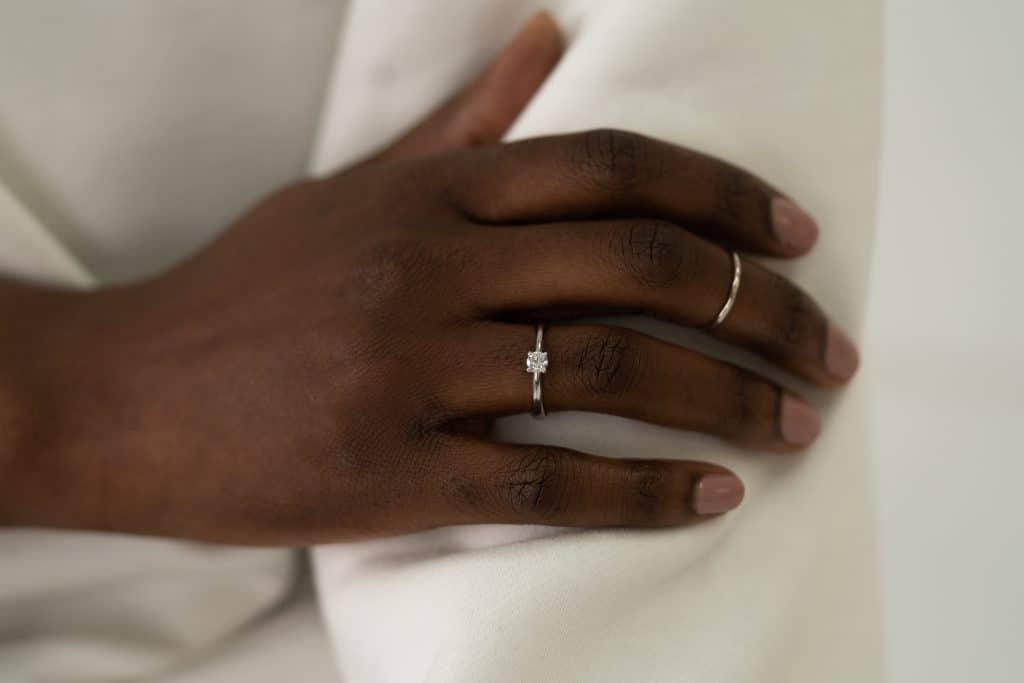What is an “ethical” diamond?
An ethical lab-grown diamond is a diamond that has been created in a controlled laboratory environment, rather than mined from the earth. These diamonds are produced using high pressure, high temperature (HPHT), or chemical vapor deposition (CVD) techniques. Although lab diamonds have the same chemical and physical properties as natural diamonds, they are much more affordable and ethically more responsible, as they do not involve environmentally destructive mining and labor exploitation. For this reason, they are increasingly popular as an alternative to natural diamonds.
Evolution of the main sources of diamond mining and weight of the “informal” sector
The main diamond deposits have undergone a significant change in recent centuries. During the Middle Ages, the main sources of diamonds were India and the Persian Gulf region. With the advent of the colonial era, Brazil became a major diamond producer.
However, the discovery of diamond in the Kimberley region of South Africa in 1867 transformed the global dynamics of the diamond industry. South Africa became the world’s leading diamond producer, and a number of multinational mining companies emerged to exploit this wealth.
In the 1980s, other major diamond deposits were discovered in places such as Australia, Canada and Russia, providing significant competition for South Africa in global diamond production.
Today, the main diamond producers are Russia, Botswana, Canada and Australia, although a large amount of diamonds are still mined in South Africa.
It should be noted that only 30% of the diamonds in circulation (or even 20%, depending on the sources) are used for jewelry, while the remaining 70% is destined for industry.
The informal sector is an important factor in the diamond industry. Smuggled diamonds mined in illegal mines and traded on the black market are a major problem in some African countries, such as the Democratic Republic of Congo. Lack of regulation and labor exploitation are also common in this informal industry.
The “blood diamonds” story
Blood diamonds are diamonds mined illegally in conflict zones and sold to finance wars and armed groups. In the late 20th century, rebel groups in African countries such as Sierra Leone and Angola began controlling diamond mines and using slaves to work in them. The rebels sold the diamonds in exchange for weapons and funds for their guerrilla activities. The situation was denounced by NGOs and in 2003 the Kimberley Process was established, a certification system that seeks to guarantee that the diamonds traded do not come from conflict zones. However, the illegal diamond trade continues to exist. The story was told in the movie “Blood Diamond” starring Leonardo DiCaprio.
The Kimberley Process and the desire to eliminate the trade in conflict diamonds
The Kimberley Process is an international agreement that aims to eliminate the trafficking of conflict diamonds and ensure that diamonds being traded are from legitimate sources.
The agreement requires diamond-producing countries to establish certification systems that ensure that exported diamonds are legitimate and are not financing conflict.
However, several NGOs and experts have questioned the effectiveness of the Kimberley Process, as there have been cases where certification systems have not functioned properly, allowing conflict diamonds to enter the market. In addition, the ability of the process to address other problems related to diamond production, such as labor and environmental exploitation in the mines, has also been questioned.
Despite the criticisms, the Kimberley Process remains an important international mechanism for addressing the trafficking of conflict diamonds and ensuring that the diamonds being traded are legitimate.
Lab-grown ethical diamond
The history of lab-grown diamonds dates back to the 1950s, when scientists discovered that they could create diamonds using high-pressure and high-temperature techniques. Although synthetic diamonds were initially produced only for industrial purposes, the technology improved in the 1980s, and they have since been used to make diamond jewelry.
In the jewelry world
Lab-grown diamonds are gaining increasing popularity in the jewelry world, and for good reason. Unlike diamonds mined from the earth, they are created by humans and have no negative social impact. They are also significantly more affordable than natural diamonds, making them more accessible to the average consumer.
Lab-grown ethical diamonds are an excellent choice for those looking for a diamond without the concerns and costs associated with earth-mined diamonds. Earth-mined diamonds can have a negative impact on the environment and the local communities where they are mined. Workers who mine diamonds are often exploited and underpaid, and diamond mining can cause deforestation, soil erosion and water pollution.
In addition to environmental and social problems, diamonds mined from the earth can also have ethical problems related to the trafficking and illegal diamond trade. They can be mined in conflict zones and used to finance wars and terrorist groups.
In contrast, ethical lab-grown diamonds are produced in a controlled environment, which means there is no environmental damage or labor exploitation. In addition, they eliminate any blood diamond problems, as there are no conflicts associated with diamond mining.
Is it the same quality as a natural diamond?
The quality and appearance of lab-grown ethical diamonds are identical to those of diamonds mined from the earth. Lab-grown diamonds are created using the same chemicals and processes as natural diamonds, which means they have the same physical and optical qualities. The only difference is that lab-grown diamonds are created in a laboratory rather than mined from the earth.
The LUM choice: lab-grown diamond, a modern diamond breaking the rules
The lab-grown diamond is a modern jewel that has challenged the traditional rules of diamond mining and trading.
Lab-grown diamonds have ushered in a new era of ethical and affordable jewelry, and have changed the way people buy and value diamond jewelry.
LUM is part of this avant-garde vision of jewelry, choosing to be part of a future that revolutionizes the codes of luxury.


